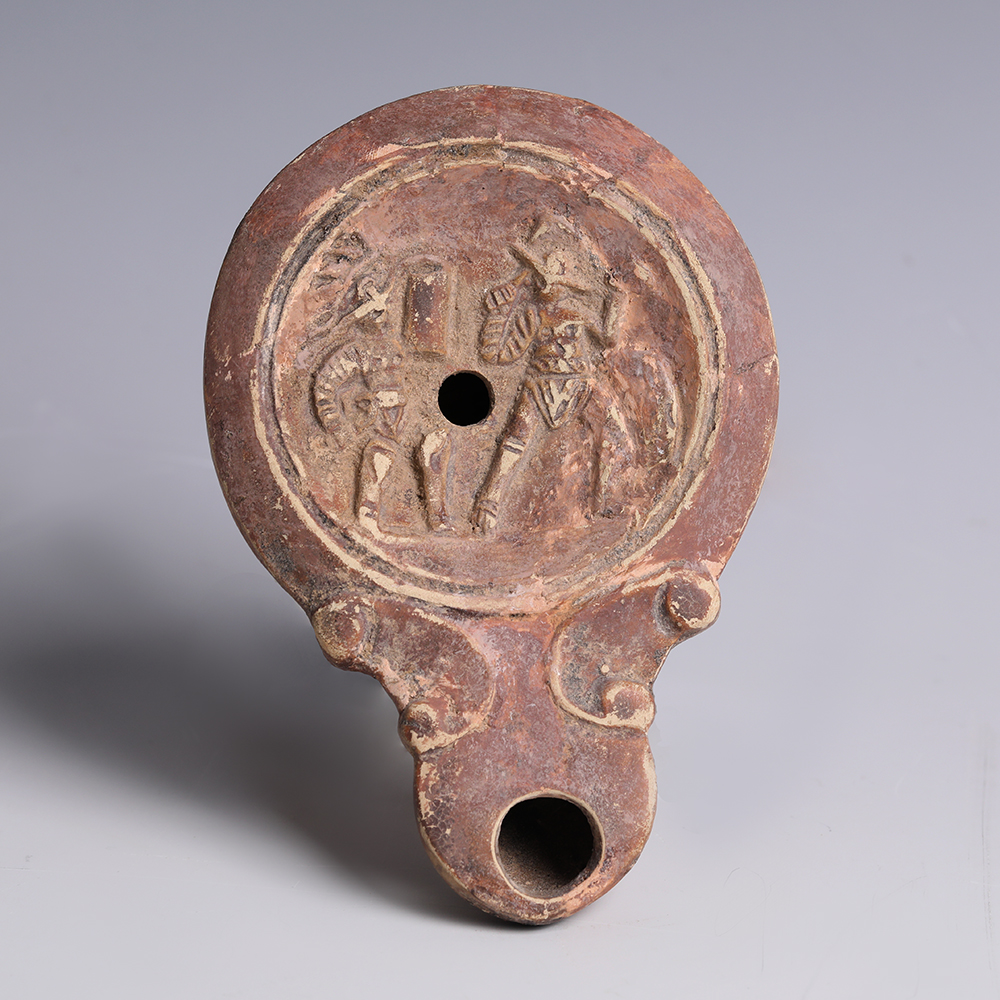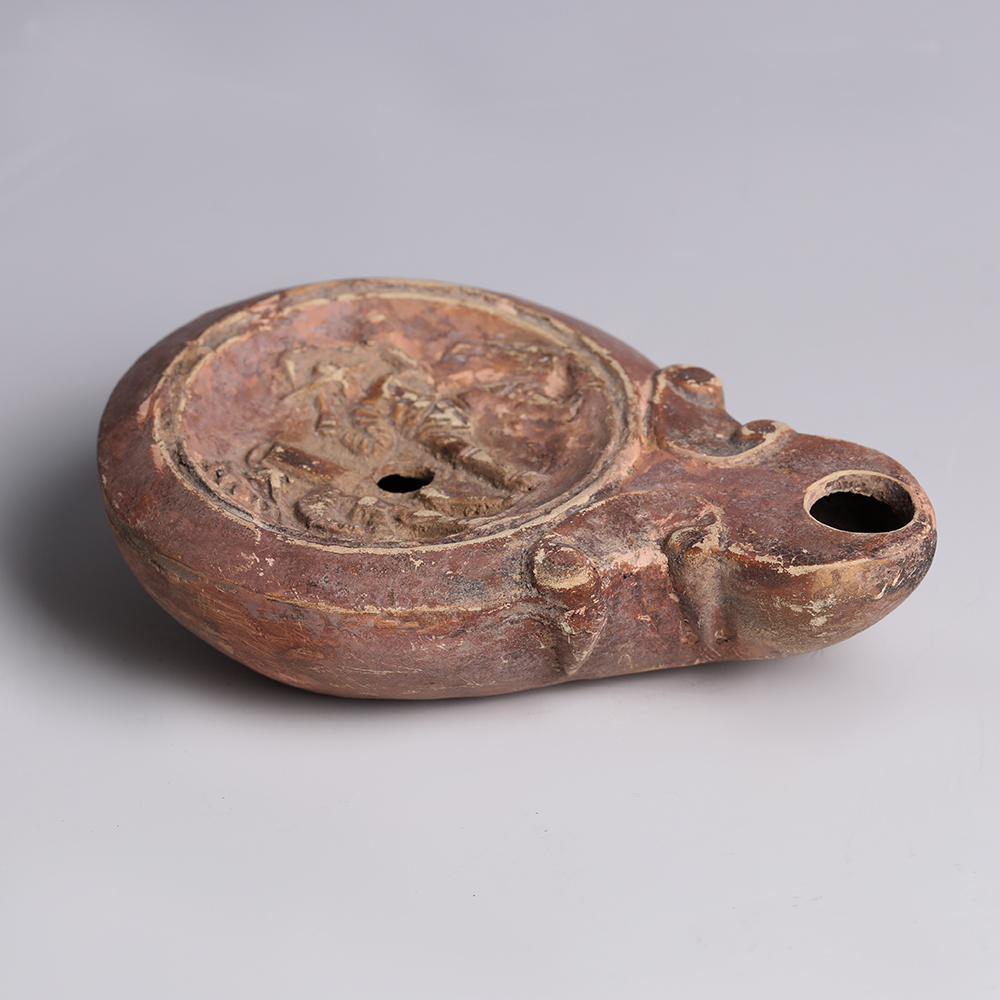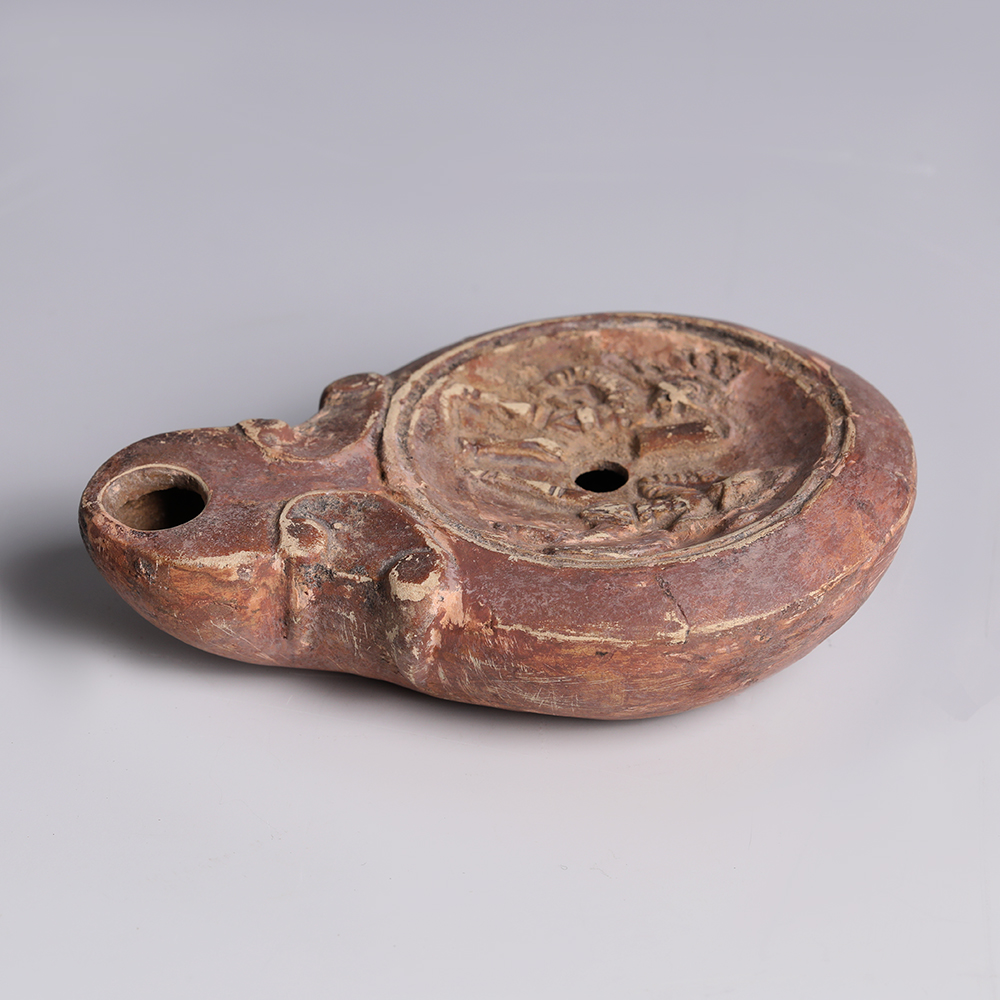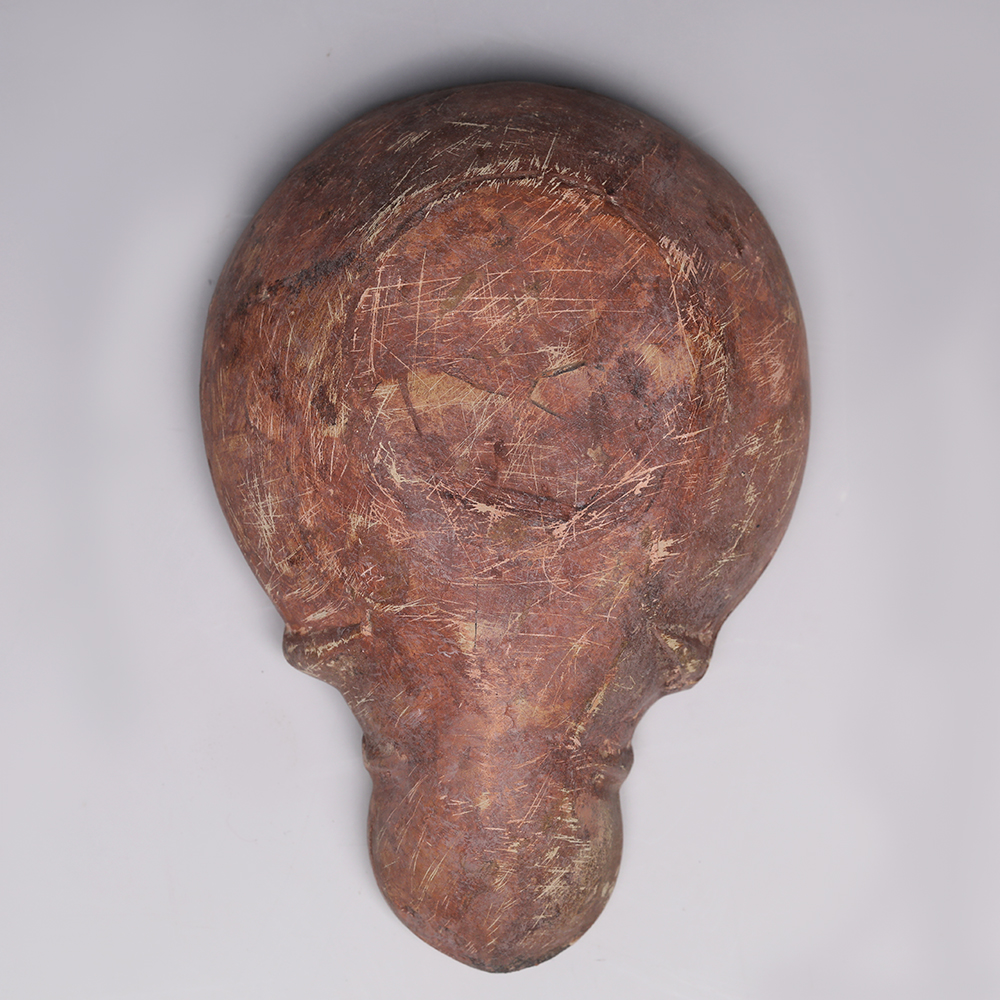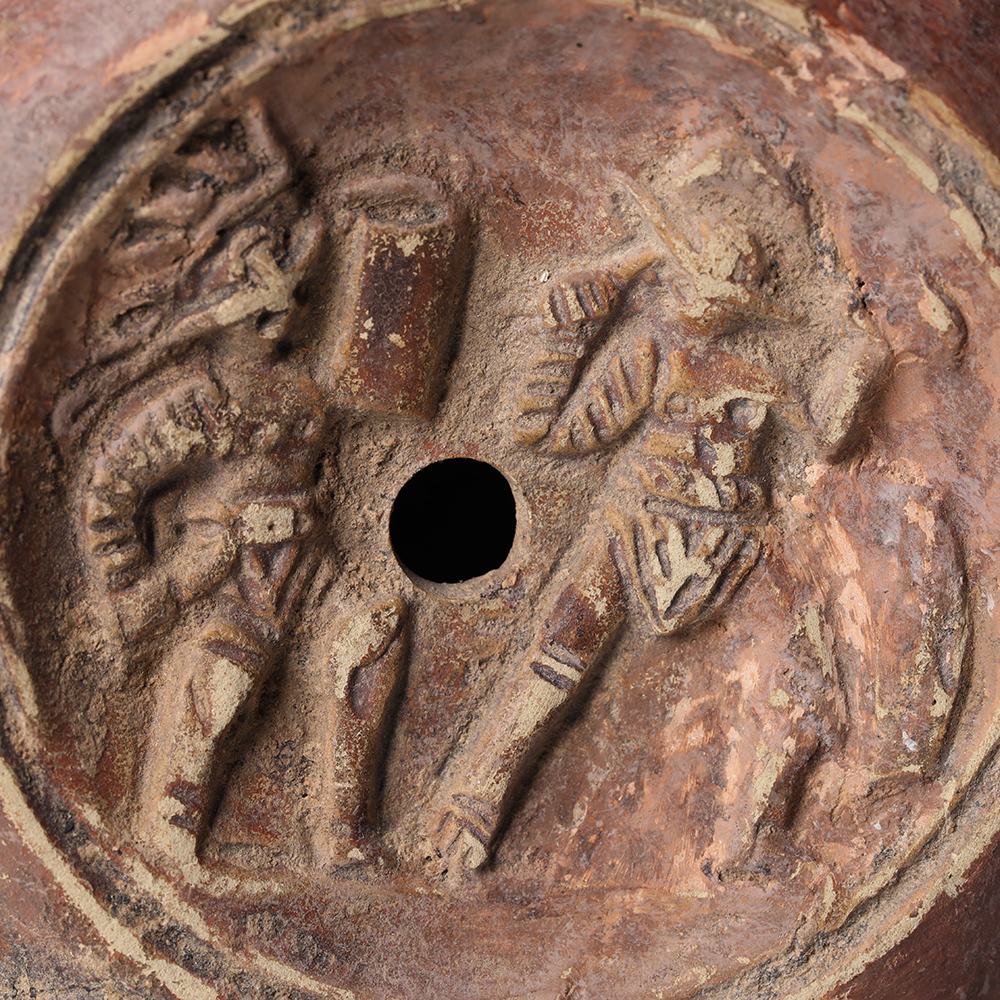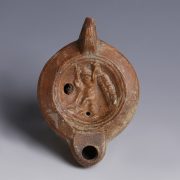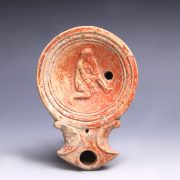Gladiatorial entertainment was one of Rome’s most popular exports and this legacy is embodied in the archaeological remains of Amphitheatres found largely in the West of the Roman Empire. The gladiator depicted here, with his crested helmet, curved rectangular shield and protective arm grieves, is quite clearly a Murmillo. Murmillones became popular during the 1st century AD, replacing the Gallus gladiators. The Murmillo had various opponents, as much thought was given to which gladiator type should fight each other. They were often paired against the retiarius, gladiators depicted as fishermen who held a net and were lightly armoured. It is certainly fitting that a gladiator styled as a fisherman should do battle with one depicted as a fish. Murmillones had stylised fish fashioned on their helmets and their name derived from the mormylos, or sea fish.
The immense similarity to the referenced Getty Museum example leads us to assume that the lamps came from the same factory, made in North Africa, Tunisia. As this type of lamp was mould-made, multiples would have been produced with ease.
